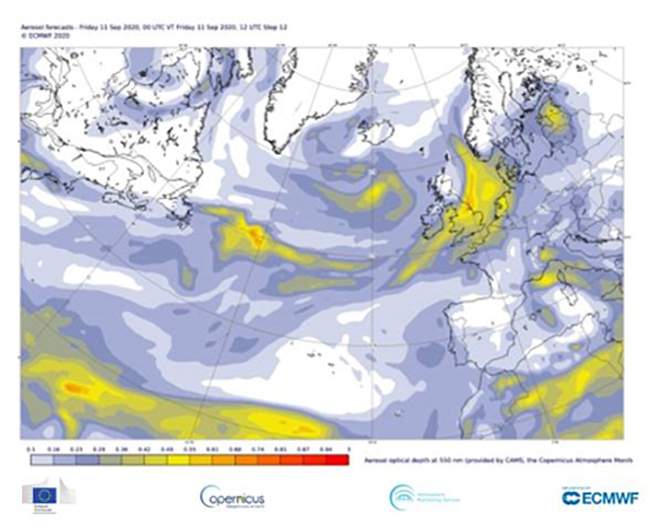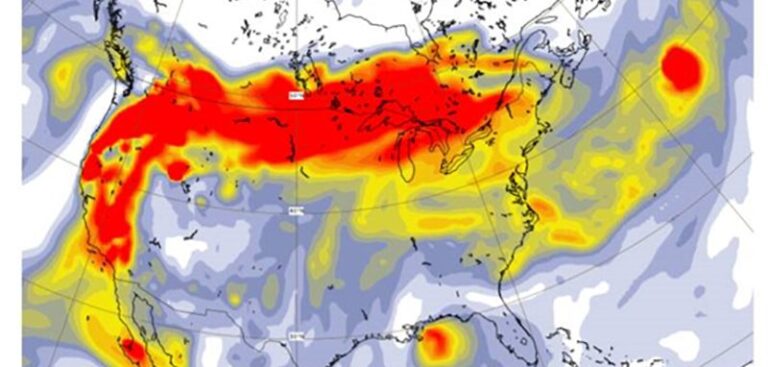Data from the Copernicus Atmosphere Monitoring Service (CAMS), implemented by the European Centre for Medium-Range Weather Forecasts on behalf of the European Commission, reveals that the wildfires currently raging across the Western USA are significantly more intense than the 2003-2019 average for the whole country and the affected states.
CAMS, which monitors daily wildfire activity worldwide using satellite observations of their intensity to estimate emissions of atmospheric pollutants, says it has tracked the long-range transport of the smoke as far as 8,000km away in Northern Europe.
The fires burning in California since mid-August, and in Oregon and Washington since the beginning of September, have emitted vast quantities of thick smoke that has affected a huge area. The fires emitted an estimated 21.7 megatons of carbon in California, 7.3 megatons of carbon in Oregon and 1.4 megatons of carbon in Washington. Overall emissions for Western USA were up to an estimated 30.3 megatons of carbon.
Mark Parrington, CAMS senior scientist and wildfire expert, explained the significance of the current fires, “The scale and magnitude of these fires are at a level much higher than in any of the 18 years that our monitoring data covers, since 2003. A good indicator of smoke thickness is the aerosol optical depth, or AOD.
“In the Western USA, we have seen that AOD levels have reached very high values of seven or above, which has been confirmed by independent ground-based measurement. To put this into perspective, an AOD of one would already indicate a lot of aerosols in the atmosphere. CAMS monitoring of atmospheric conditions is vital in situations like that as, it provides decision-makers and other individuals with the knowledge to make informed choices regarding their heath and the health of others.”




